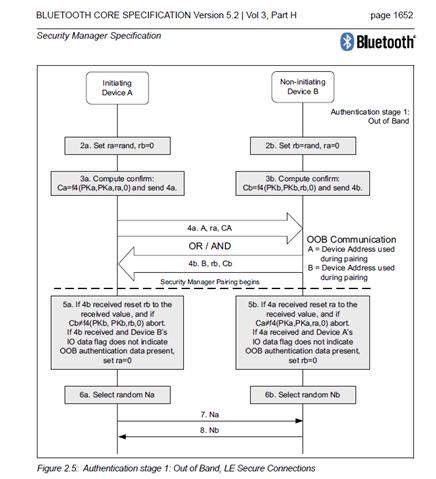Hi Team,
We are in process of developing pairing mechanism for our peripheral device. We are considering using NFC for OOB. Here is what we think we should be doing:
1. Use Mobile (NFC) to wake-up our peripheral device
2. Our peripheral device sends Key (unique per device) over NFC to our Mobile App
3. Our mobile app uses this "key + encryption" to pair with our device
Idea here is to restrict any other app to connect to our device.
We've few questions here:
1. Is this a viable option?
2. In above steps at Step-2, how do we send data from peripheral device to mobile app?
3. Is there any example/blog around this?
4. Any other suggestions t this approach?
TIA!



